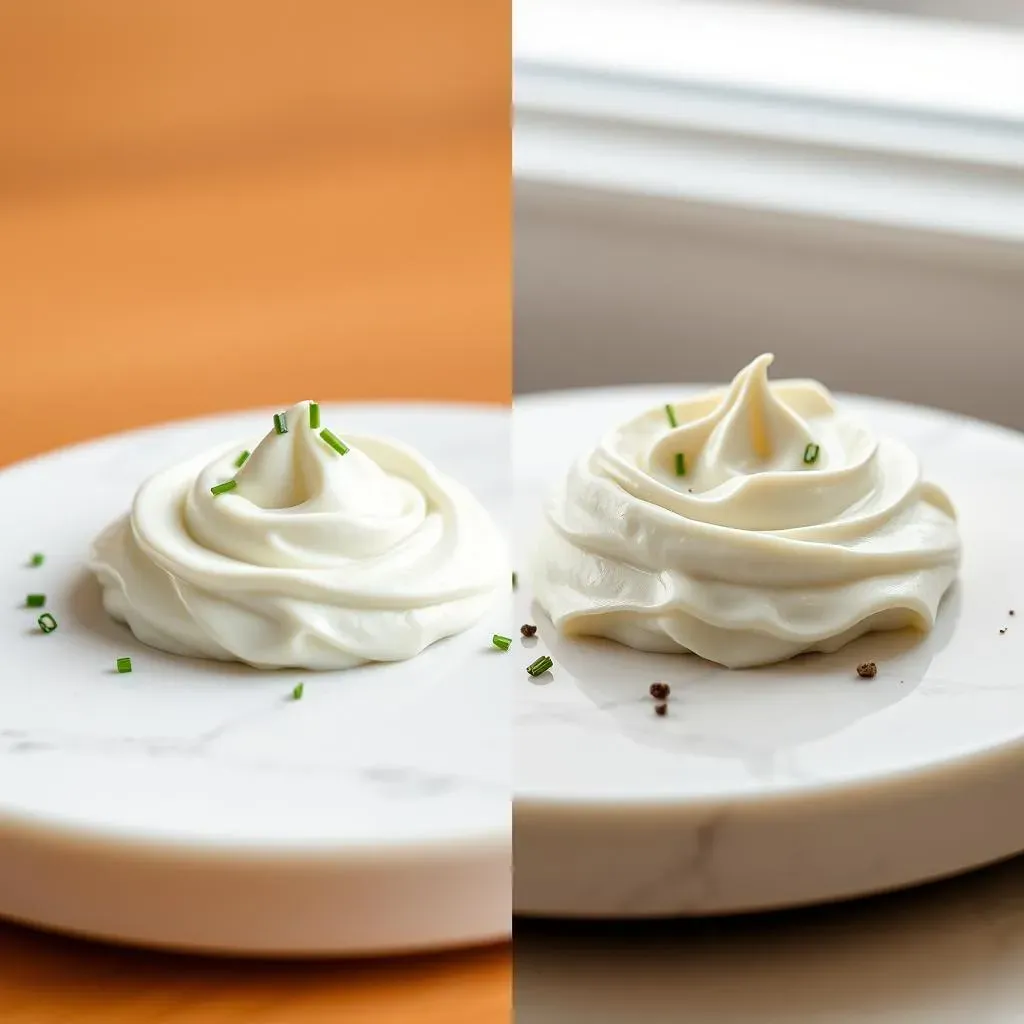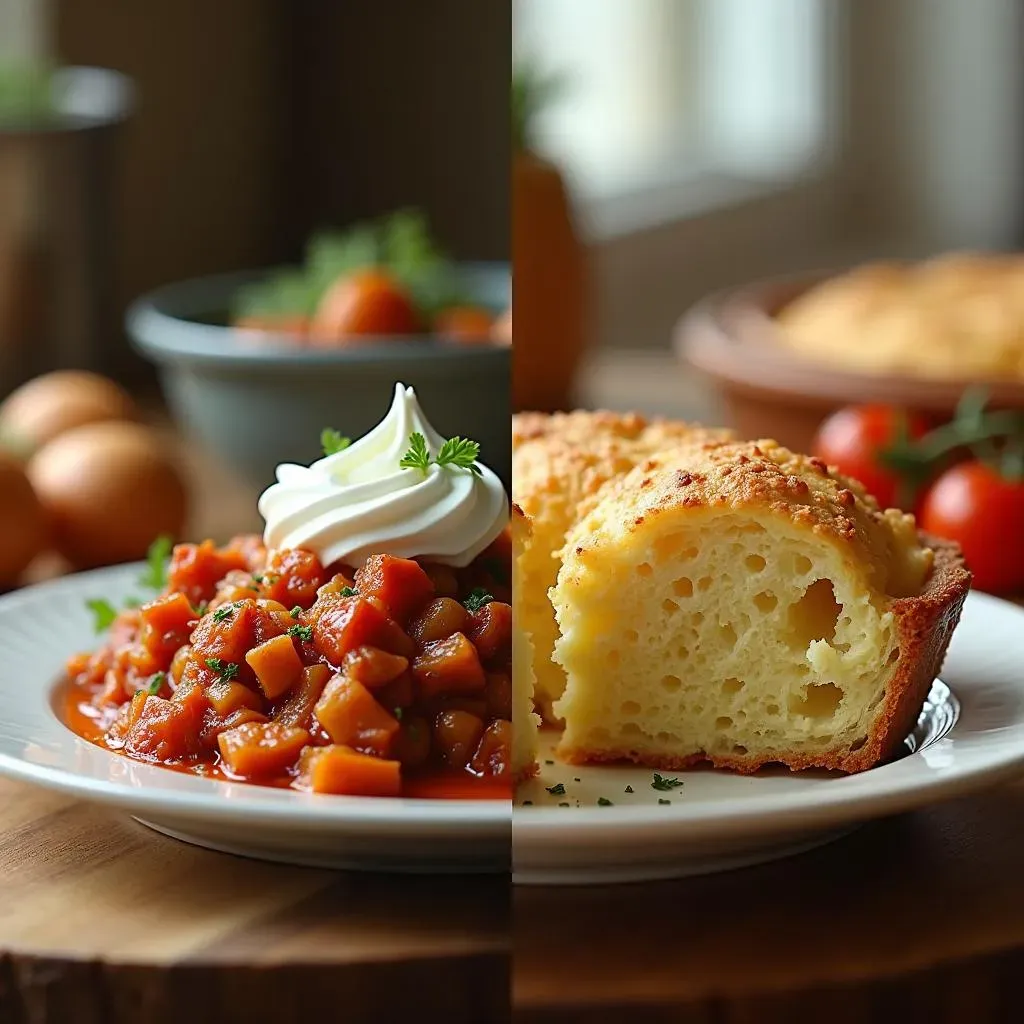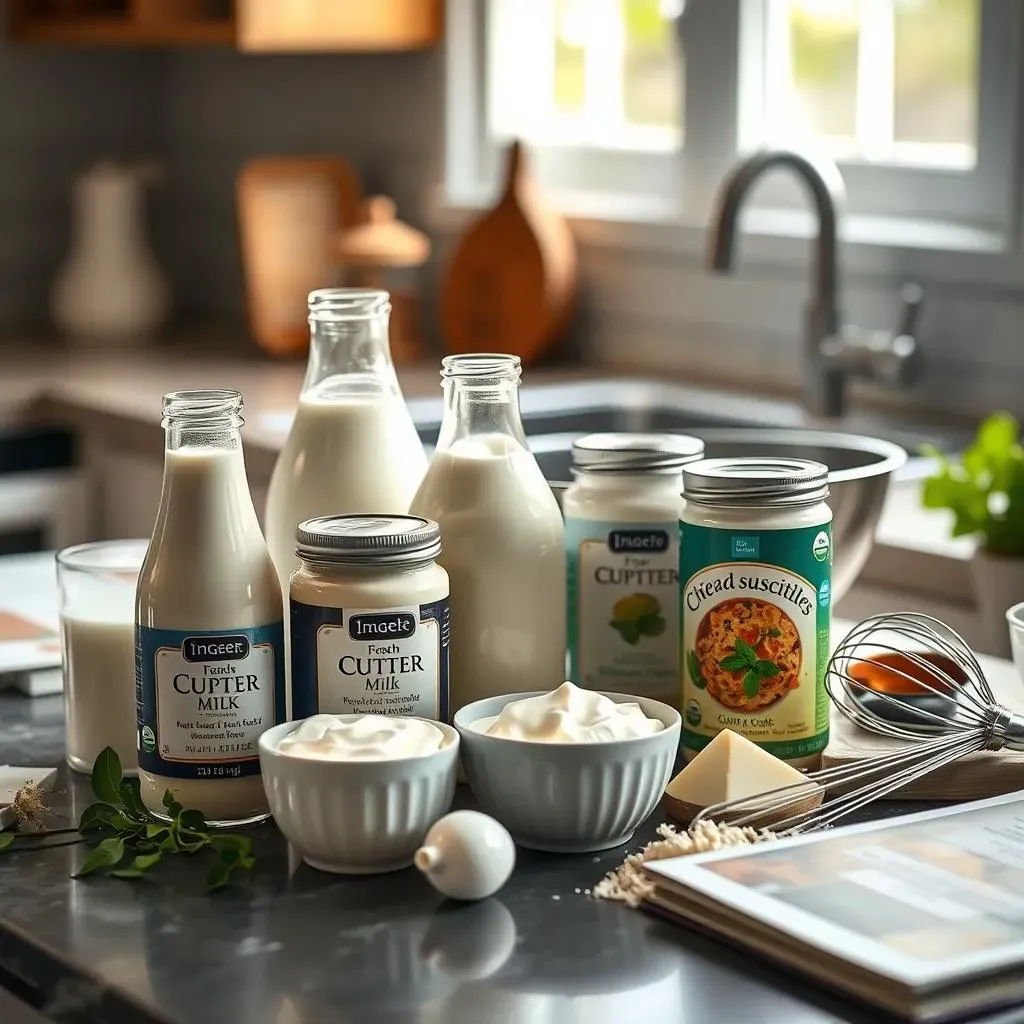Table of Contents
Ever stared blankly at a recipe, realizing you're missing a key ingredient – cream? Don't panic! We're diving into the creamy world of substitutions, specifically tackling the question: can sour cream be substituted for cream? This isn't a simple yes or no answer. We'll explore the subtle yet significant differences between sour cream and various types of cream, helping you understand when a swap is a smart move and when it might lead to culinary chaos. We'll examine the fat content, texture, and flavor profiles of both to guide your decision-making. Learning when sour cream shines as a replacement and when it falls flat will empower you to make informed choices in the kitchen. But the exploration doesn't stop there! We'll also uncover other excellent cream substitutes, offering a broader range of options for your baking, cooking, and even your dips. Get ready to master the art of ingredient swaps and unlock a world of culinary flexibility!
Understanding Sour Cream and Cream: Key Differences

Understanding Sour Cream and Cream: Key Differences
Fat Content: The Creamy Core
Let's start with the basics: fat. Cream, especially heavy cream, boasts a significantly higher fat content than sour cream. This directly impacts texture and how it behaves in recipes. Heavy cream whips beautifully, creating airy peaks perfect for frosting or sauces. Sour cream, with its lower fat percentage, is thicker and tangier, less likely to whip into those lofty peaks. Think of it like this: heavy cream is a fluffy cloud, while sour cream is a more grounded, dense dollop.
This difference in fat content is crucial when considering substitutions. If a recipe relies on the whipping properties of heavy cream, using sour cream will likely result in a denser, less airy final product. For instance, substituting sour cream in a whipped cream frosting might lead to a clumpy, heavy mess. If you're unsure about the fat content of your specific cream, always check the label!
Cultured vs. Uncultured: A Tangy Twist
Sour cream gets its distinctive tang from a culturing process. Bacteria ferment the cream, creating lactic acid, which gives it that signature sour taste. Cream, on the other hand, isn't typically cultured, resulting in a milder, sweeter flavor. This tanginess is a key characteristic of sour cream, significantly affecting the overall taste of the dish. If a recipe calls for a creamy, neutral background flavor, sour cream’s tang might clash unexpectedly.
Consider a creamy tomato soup. Heavy cream would enhance the richness without altering the flavor profile significantly. However, sour cream's tartness could overpower the delicate tomato flavor. If you're aiming for a specific taste, remember that the sour cream's tang can be a deal-breaker, especially in recipes that call for a neutral creamy base.
Texture and Consistency: A Thick and Thin Tale
The texture of sour cream and cream differ significantly. Sour cream possesses a thicker, more cohesive consistency, while cream, depending on the type (heavy, whipping, half-and-half), can range from thick and pourable to quite thin. This difference in consistency impacts how each ingredient blends into a recipe. Sour cream might clump in a thin sauce, while heavy cream might thin out a thick batter.
Imagine making a creamy pasta sauce. Heavy cream would create a smooth, luxurious sauce that coats the pasta perfectly. However, sour cream, with its thicker consistency, might not blend as smoothly, potentially resulting in a slightly grainy texture. For a smoother result in dishes like sauces or soups, you might consider thinning the sour cream slightly with milk or water before adding it to the recipe. Always consider the desired final texture when deciding on your substitution.
Ingredient | Fat Content (approx.) | Texture | Flavor |
|---|---|---|---|
Heavy Cream | 36% | Thick, pourable | Mild, slightly sweet |
Sour Cream | 20% | Thick, cohesive | Tangy, slightly sour |
Sour Cream as a Cream Substitute: When It Works and When It Doesn't

Sour Cream as a Cream Substitute: When It Works and When It Doesn't
Savory Successes: Where Sour Cream Shines
Sour cream can be a surprisingly effective substitute for cream in many savory dishes. Its tang adds a unique depth of flavor that can complement rich sauces, soups, and dips. Think creamy tomato soup – a dollop of sour cream adds a delightful tang that balances the sweetness of the tomatoes. Or consider a creamy chili; the sour cream cuts through the spiciness and adds a cool, creamy counterpoint. The thicker consistency of sour cream also works well in dishes where you want a more substantial, less pourable creaminess. It's perfect for things like potato toppings or dips where you need a nice, thick consistency.
However, remember that sour cream's tanginess isn't always welcome. In recipes that require a neutral creaminess, sour cream might overpower the other flavors. For instance, in a delicate seafood sauce, the sour cream's tartness might clash with the subtle flavors of the fish. Always consider the other ingredients and the desired flavor profile before making your substitution. If you're unsure, a small taste test can save you from a culinary disaster!
Baking Blunders: When Sour Cream Fails
While sour cream can work in some savory applications, it's generally not a good substitute for cream in baking. The higher fat content of cream is crucial for creating the desired texture and moisture in baked goods. Cream contributes to a lighter, fluffier texture, while sour cream's lower fat content and tangy flavor can lead to dense, dry, or oddly flavored results. Imagine trying to use sour cream in a delicate angel food cake; the tang would ruin the delicate sweetness, and the cake would likely be dense and heavy.
The tanginess of sour cream can also react unexpectedly with other baking ingredients, potentially altering the rise and texture of your baked goods. In recipes that rely on the delicate balance of ingredients, sour cream's unique characteristics can upset that balance, leading to disappointing results. For baking, stick to the recommended ingredients, or explore other suitable substitutes like buttermilk or yogurt, which are more compatible with the baking process. If you're experimenting, start with a small batch to test the results before committing to a larger quantity.
Recipe Type | Sour Cream Suitable? | Alternative |
|---|---|---|
Savory Sauce | Often Yes | Heavy cream, half-and-half |
Cake | No | Buttermilk, milk + oil |
Frosting | No | Heavy cream, butter |
Exploring Alternative Substitutes for Cream: Beyond Sour Cream

Exploring Alternative Substitutes for Cream: Beyond Sour Cream
Milk and Butter: A Simple Solution
Sometimes, the simplest solutions are the best. For many recipes, a combination of milk and butter can effectively mimic the creaminess of cream without the tang of sour cream. The milk provides the liquid base, while the butter adds richness and body. This works particularly well in sauces, soups, and even some baked goods. The ratio will vary depending on the recipe, but a good starting point is to replace one cup of cream with a half cup of milk and a quarter cup of melted butter. Experimentation is key to finding the perfect balance for your specific dish. Remember to adjust the cooking time, as the milk-butter mixture won't thicken in quite the same way as cream.
This substitution is a great option when you're looking for a neutral creaminess without any added flavor. For instance, in a creamy mushroom sauce, you wouldn't want the sour cream's tang to overpower the delicate mushroom flavor. Milk and butter provide a neutral base that allows the other flavors to shine. The added fat from the butter also helps to achieve a similar richness to the original recipe.
Yogurt: A Tangy Twist (But Not Sour Cream!)
Plain yogurt, especially Greek yogurt, makes a decent substitute for cream in some instances. It offers a similar thickness to sour cream, but without the pronounced tang. The higher protein content in Greek yogurt contributes to a richer, creamier texture. It's a good choice for dishes where you want a creamy base but don't want the sourness of sour cream. However, its slightly tart flavor still exists, so it might not be the perfect choice for every recipe. Depending on the recipe, you might need to adjust the amount of yogurt slightly to achieve the desired consistency.
Consider using yogurt in a creamy pasta sauce or as a topping for baked potatoes. The richness of Greek yogurt provides a creamy texture without the distinct sourness of sour cream. However, remember that the yogurt's flavor will still be subtly present, so it's important to consider the overall flavor profile of your dish. If you need a completely neutral creaminess, milk and butter are likely a better choice. If a subtle tang is acceptable, then yogurt is an excellent option.
Substitute | Best for | Considerations |
|---|---|---|
Milk + Butter | Neutral creaminess | Adjust cooking time |
Plain Yogurt | Creamy base, mild tang | May need to adjust amount |
Beyond Dairy: Vegan Cream Alternatives
For those following a vegan diet or avoiding dairy, there's a growing market of plant-based cream alternatives. Many brands offer creamy, coconut-based products that mimic the texture and richness of cream. These are often quite versatile and can be used in both savory and sweet dishes, although the flavor profile will be distinctly different from dairy cream. Be sure to check the ingredient list and nutritional information, as some vegan creams may contain added sugars or other ingredients that might not be suitable for all recipes.
These vegan options are excellent for those seeking a dairy-free alternative to cream, particularly in recipes where a neutral creaminess is desired. Many vegan creams are designed to whip just like dairy cream, making them suitable for vegan desserts and other recipes requiring airy textures. However, remember that the flavor might be subtly different, and you might need to adjust seasonings accordingly. Always test a small amount before committing to a full recipe.